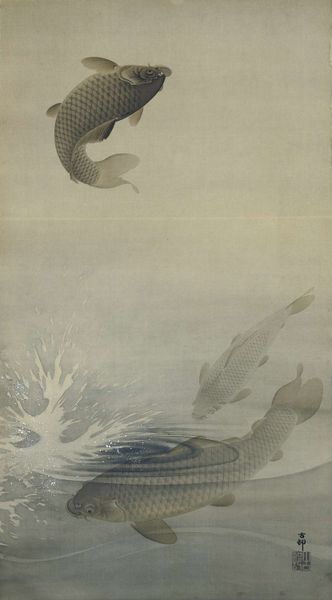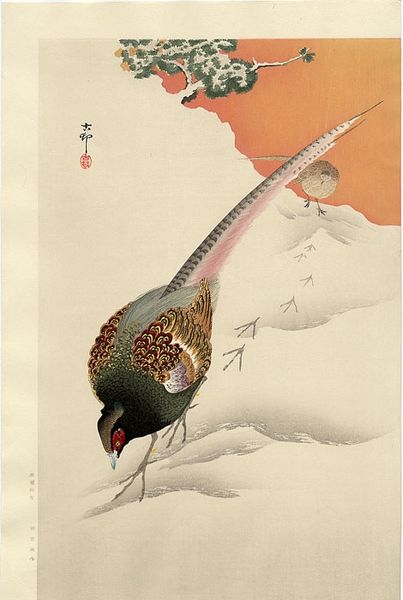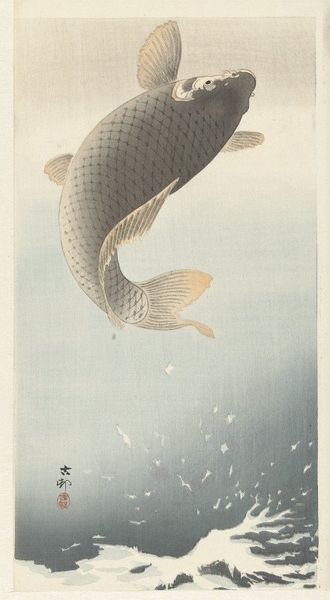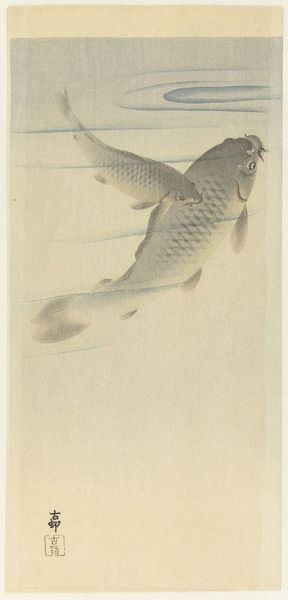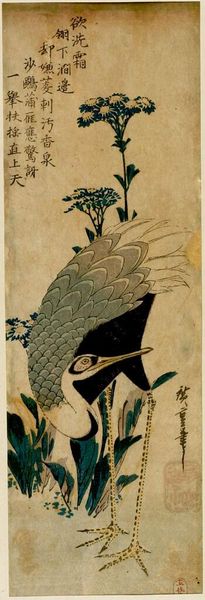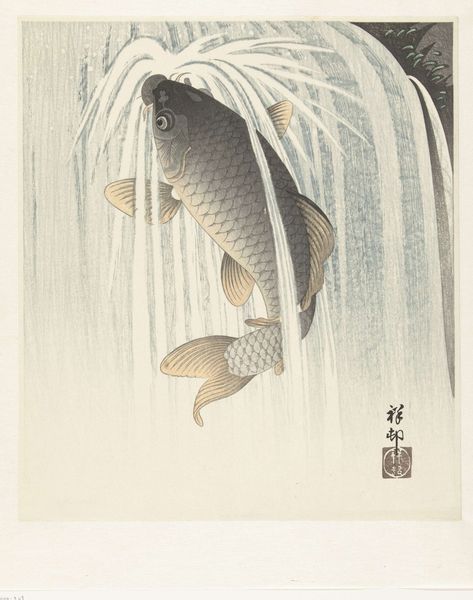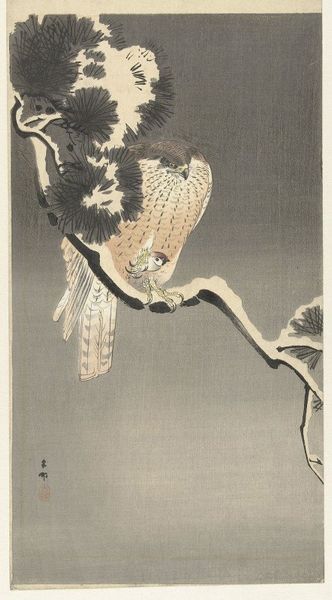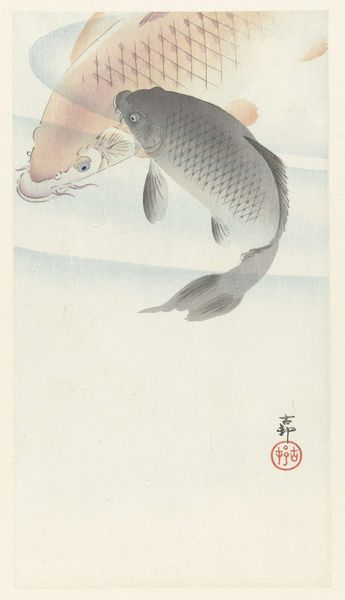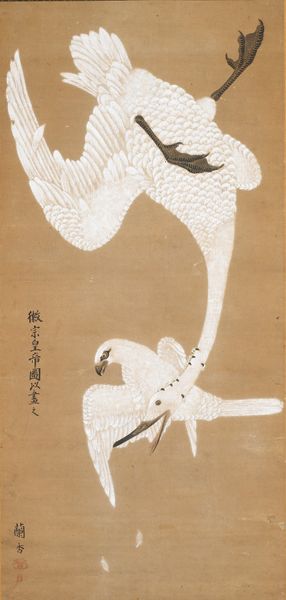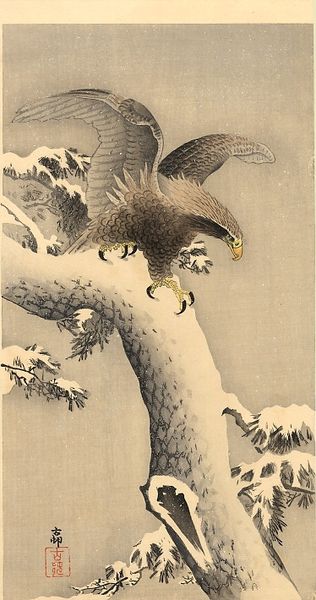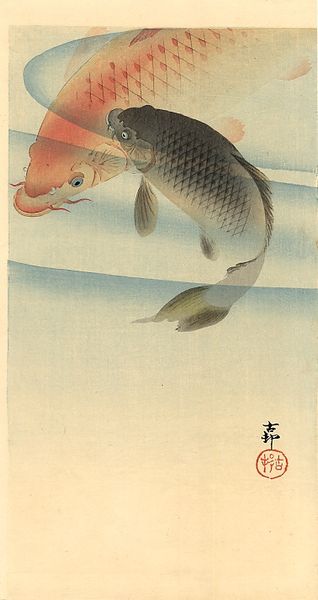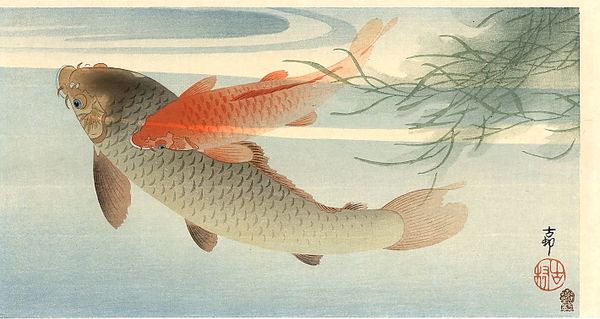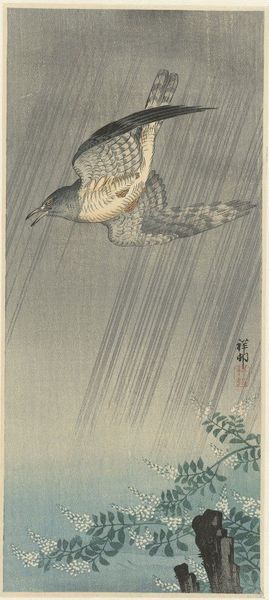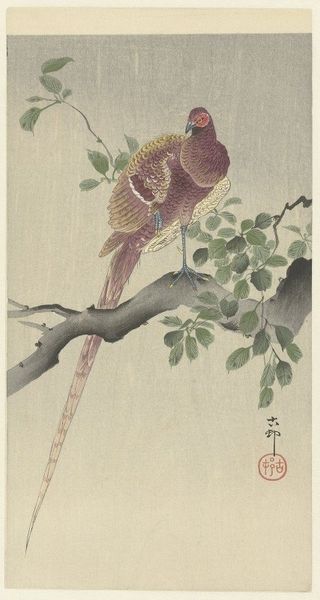
Copyright: Public domain
Editor: This is Ohara Koson's "Carp and Bee," made around 1910. It seems to be a print using watercolor and woodblock techniques. The first thing that strikes me is the dynamic tension between the still water and the active movements of the fish and the bee. What do you see in this piece from a formal perspective? Curator: The immediate formal aspect I observe is the dynamic interplay of lines. Note how the artist contrasts the fluid, curving lines of the carp with the angular lines implying the bee's rapid motion. This dichotomy activates the visual plane. Consider also the carefully calibrated negative space; it isn't merely background but an integral compositional element defining the subjects. Editor: It’s interesting you mention the negative space. I hadn't considered it so deliberately placed. How does the coloring contribute to the overall effect? Curator: The artist's restricted palette— primarily soft grays and blacks punctuated by small chromatic incidents near the mouth of the carp— serves to emphasize the textured surfaces. Observe the scales meticulously rendered on each carp, creating depth and tactile suggestion on a flat plane. The composition, split by the visual weights of each form creates a subtle disbalance. Do you find the asymmetrical grouping impactful? Editor: Absolutely! I was so focused on the subject matter that I missed how the arrangement pulls your eye around the piece. It's like a visual chase. This examination from the view of formal composition really shed new light on Koson's work! Curator: Indeed, by parsing these intrinsic visual relationships, we move closer to a richer appreciation of the artist's intent and craft, transcending mere representation.
Comments
No comments
Be the first to comment and join the conversation on the ultimate creative platform.
